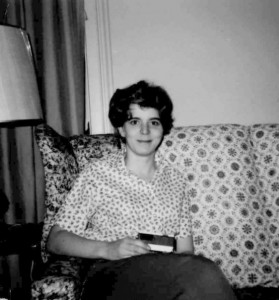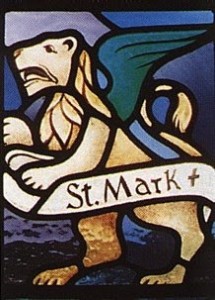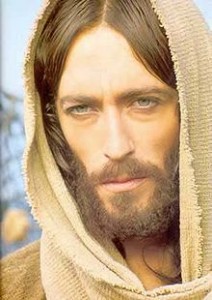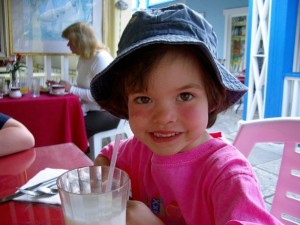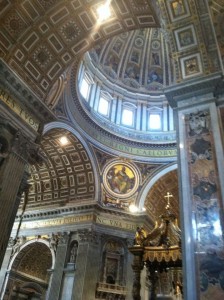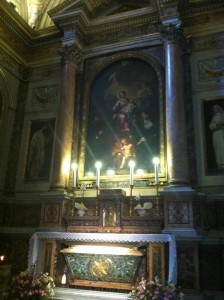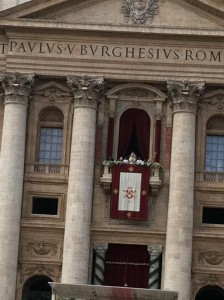He walked barefoot through the streets while singing praises to God. A knapsack was strung across his shoulders, a hand-carved cross was held in his hands, and a rosary swung from his belt. He erected crosses in places where he preached. He once spent a year pushing wheelbarrows of dirt and stone up a man-made hill in an effort to construct a life-sized Calvary; only to be ordered to tear it down. He once was poisoned but did not die.
Such was the life of St. Louis Marie de Montfort, who lived a life filled with frequent prayer in front of the Blessed Sacrament, love for the poor, joy in humiliation and persecutions, and promotion of consecration to Jesus through Mary. This troubadour priest preacher set out to proclaim the news of the love of God and to place emphasis on the maternal care of the Blessed Virgin Mary to the poor, needy, and the afflicted.
He has been criticized by many as having a flamboyant way of preaching and writing. However, to others, such as myself, his words are delightful, bold, and contain inspiration for living a deeper spiritual life.They are also a great source to help examine one’s conscience. It doesn’t take long to see why he is among my favorite Saints!
Letter to the Friends of the Cross
What it means to take up one’s cross is explained by St. Louis Marie de Montfort in his letter to the Friends of the Cross:
“Let him take up his cross,” the one that is his. Let that man (or woman) so rare “far beyond the price of pearls,” take up his cross joyfully, embrace it lovingly, and carry it courageously on his shoulders, his own cross, and not that of another – his own cross which I, in my wisdom, designed for him in every detail of number, measure and weight; his own cross which I have fashioned with my own hands and with great exactness as regards its four dimensions of length, breadth, thickness and depth; his own cross, which out of love for him I have carved from a piece of the one I bore to Calvary; his own cross, which is the greatest gift I can bestow upon my chosen ones on earth; his own cross, whose thickness is made up of the loss of one’s possessions, humiliations, contempt, sufferings, illnesses and spiritual trials, which come to him daily till his death in accordance with my providence; his own cross, whose length consists of a certain period of days or months enduring slander, or lying on a sick-bed, or being forced to beg, or suffering from temptations, dryness, desolation, and other interior trials; his own cross, whose breadth is made up of the most harsh and bitter circumstances brought about by relatives, friends, servants; his own cross, whose depth is made up of the hidden trials I shall inflict on him without his being able to find any comfort from other people, for they also, under my guidance, will turn away from him and join with me in making him suffer.
“Let him take up,” that is, let him carry his cross and not drag it, or shake it off, or lighten it, or hide it. Instead, let him lift it on high and carry it without impatience or annoyance, without intentional complaint or grumbling, without hesitation or concealment, without shame or human respect.
“Let him take it up” and set it on his brow, saying with St. Paul, “The only thing I can boast about is the Cross of our Lord Jesus Christ.”
Let him carry it on his shoulders like our Lord that it may become the source of his victories and the scepter of his power: “Dominion is laid upon his shoulders.”
Let him set it in his heart, where it may, like the burning bush of Moses, burn day and night with the pure love of God without being consumed!
“The cross”: let him carry it, for nothing is so necessary, so beneficial, so agreeable, or so glorious as to suffer something for Jesus Christ.”
Totus Tuus
St. Louis Marie de Montfort died in 1716 at the age of 43. His writings continue to be an ageless source of Marian devotion and love for the Cross of Jesus.“Totus tuus” or “Totally Yours”, was Montfort’s personal motto, which also became the motto of the late Blessed John Paul II. Lay and religious alike have performed his version of Consecration to Jesus through Mary. The word consecration means to set be set aside for the purpose of serving the Lord. The Consecration to Jesus through Mary is a beautiful exercise that helps one to become more prayerful and focused on Jesus than ever before. Information on how to do this consecration is widely available on the internet and is open to anyone, even non-Catholics. And if you are wondering: This is a Marian devotion and not Marian worship! Many who have taken up this exercise can testify that their spiritual lives in Jesus have been enriched!
April 28 is the Feast Day of St. Louis Marie de Montfort. The Youtube video posted above is the Act of Total Consecration according to the method of St Louis de Montfort (1673-1716).



